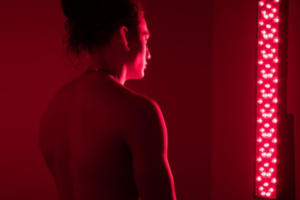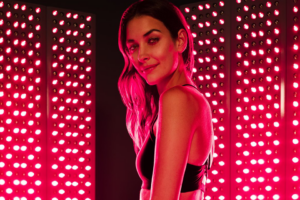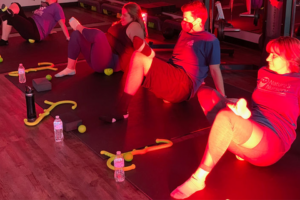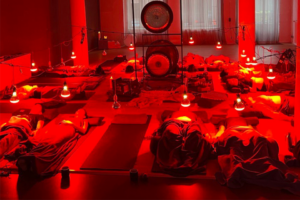Unlocking the Power of Red Light Therapy: A Comprehensive Guide to At-Home Use

Red light therapy has been gaining popularity as a non-invasive treatment for various health and beauty concerns. This article will explore the ins and outs of red light therapy, its potential benefits, and how you can effectively use it at home. Whether you’re looking to improve your skin, reduce pain, or enhance your overall well-being, this guide will provide you with valuable insights into the world of red light therapy.
Table of Contents
What Exactly is Red Light Therapy and How Does it Work?
Red light therapy, also known as photobiomodulation therapy or low-level laser therapy, is a treatment that uses specific wavelengths of red and near-infrared light to stimulate cellular function. This non-invasive technique works by penetrating the skin and interacting with mitochondria, the powerhouses of our cells.The therapy uses wavelengths of red light typically ranging from 630 to 660 nanometers and near-infrared light from 810 to 850 nanometers. These wavelengths are believed to enhance cellular energy production, reduce inflammation, and promote healing.
What Are the Potential Benefits of Red Light Therapy?
Research shows that red light therapy may offer a range of benefits:
- Skin rejuvenation: It may help reduce fine lines and wrinkles, improve skin texture, and promote collagen production.
- Pain relief: Some studies suggest it can alleviate chronic pain conditions.
- Wound healing: Red light therapy may accelerate wound healing processes.
- Hair growth: It might stimulate hair follicles and promote hair growth in some individuals.
- Muscle recovery: Athletes often use it to speed up muscle recovery after intense workouts.
How Can You Use Red Light Therapy at Home?
With the increasing availability of at-home red light therapy devices, it’s now possible to incorporate this treatment into your daily routine. Here are some tips for using red light therapy at home:
- Choose the right device: Select a high-quality, FDA-cleared device that emits the appropriate wavelengths.
- Follow the manufacturer’s instructions: Each device may have specific usage guidelines.
- Be consistent: Regular use is key to seeing results.
- Protect your eyes: Always wear protective goggles during treatment.
- Start slowly: Begin with shorter sessions and gradually increase duration as recommended.
What Types of Red Light Therapy Devices Are Available for Home Use?
There’s a wide range of red light therapy devices available for home use:
- Full-body panels: These large devices allow for whole-body treatment.
- Handheld devices: Portable and ideal for targeted treatment of smaller areas.
- LED masks: Designed specifically for facial treatments.
- Red light therapy bulbs: Can be used in standard light fixtures for convenient treatment.
How Long Does it Take to See Results from Red Light Therapy?
The time it takes to see results from red light therapy can vary depending on the condition being treated and individual factors. Some people report noticing improvements in skin appearance within a few weeks, while others may need several months of consistent use to see significant changes.For example, a study published in the journal “Photomedicine and Laser Surgery” found that participants who used red light therapy twice a week for 30 sessions showed improved skin complexion and skin feeling1.
Are There Any Side Effects or Risks Associated with Red Light Therapy?
Red light therapy is generally considered safe when used as directed. However, potential side effects may include:
- Temporary redness or warmth in the treated area
- Eye strain if proper eye protection is not used
- Possible interactions with certain medications that increase light sensitivity
It’s always best to consult with a healthcare professional before starting any new treatment regimen.
How Does Red Light Therapy Compare to Other Light-Based Treatments?
While red light therapy focuses on red and near-infrared wavelengths, other light-based treatments use different parts of the light spectrum:
- Blue light therapy: Often used for acne treatment
- Green light therapy: May help with pigmentation issues
- Yellow light therapy: Could improve skin texture and reduce redness
Each type of light therapy has its unique benefits and applications.
Can Red Light Therapy Be Combined with Other Skincare Treatments?
Yes, red light therapy can often be combined with other skincare treatments for enhanced results. Some popular combinations include:
- Red light therapy and retinol for anti-aging
- Red light therapy and vitamin C serums for skin brightening
- Red light therapy and hyaluronic acid for hydration
However, it’s essential to consult with a skincare professional to create a regimen that’s safe and effective for your specific needs.

What Does the Science Say About Red Light Therapy?
While more research is needed, several studies have shown promising results for red light therapy:
- A 2014 study found that red light therapy improved skin complexion and collagen density2.
- Another study in 2017 suggested that red light therapy could reduce pain and inflammation in people with knee osteoarthritis3.
However, it’s important to note that while these results are encouraging, more extensive clinical trials are needed to fully understand the efficacy of red light therapy for various conditions.
How to Choose the Right Red Light Therapy Device for Home Use?
When selecting a red light therapy device for home use, consider the following factors:
- FDA clearance: Look for devices that have been cleared by the FDA for safety.
- Wavelength: Ensure the device emits the appropriate wavelengths (typically 630-660nm for red light and 810-850nm for near-infrared).
- Power output: Higher power devices may be more effective but also more expensive.
- Treatment area: Choose a device that’s suitable for the area you want to treat (e.g., full-body panel vs. handheld device).
- Ease of use: Consider factors like portability, setup time, and user-friendliness.
Key Takeaways
- Red light therapy uses specific wavelengths of light to stimulate cellular function and promote healing.
- It may offer benefits for skin health, pain relief, wound healing, and more.
- At-home red light therapy devices are available, making it accessible for regular use.
- Consistency is key when using red light therapy.
- While generally safe, it’s important to follow usage guidelines and consult with a healthcare professional.
- More research is needed to fully understand the efficacy of red light therapy for various conditions.
Remember, while red light therapy shows promise, it’s not a magic cure-all. It’s best used as part of a comprehensive approach to health and wellness, including a balanced diet, regular exercise, and proper skincare routine.
A typical red light therapy device for home use
Footnotes
- Wunsch, A., & Matuschka, K. (2014). A Controlled Trial to Determine the Efficacy of Red and Near-Infrared Light Treatment in Patient Satisfaction, Reduction of Fine Lines, Wrinkles, Skin Roughness, and Intradermal Collagen Density Increase. Photomedicine and Laser Surgery, 32(2), 93-100. ↩
- Avci, P., Gupta, A., Sadasivam, M., Vecchio, D., Pam, Z., Pam, N., & Hamblin, M. R. (2013). Low-level laser (light) therapy (LLLT) in skin: stimulating, healing, restoring. Seminars in cutaneous medicine and surgery, 32(1), 41-52. ↩
- Hamblin, M. R. (2017). Mechanisms and applications of the anti-inflammatory effects of photobiomodulation. AIMS biophysics, 4(3), 337-361. ↩






